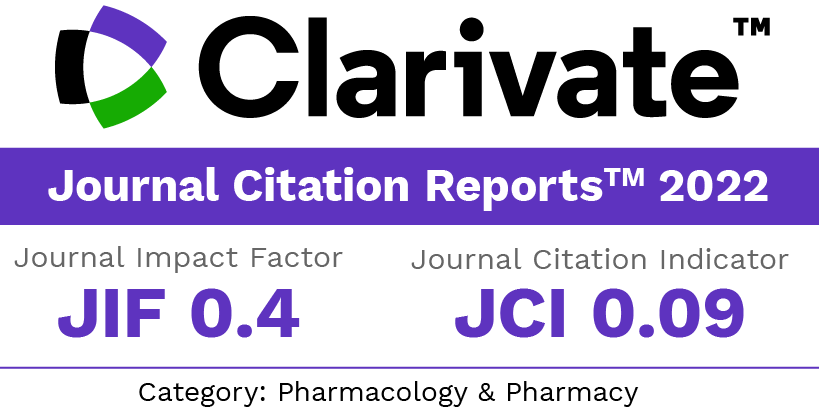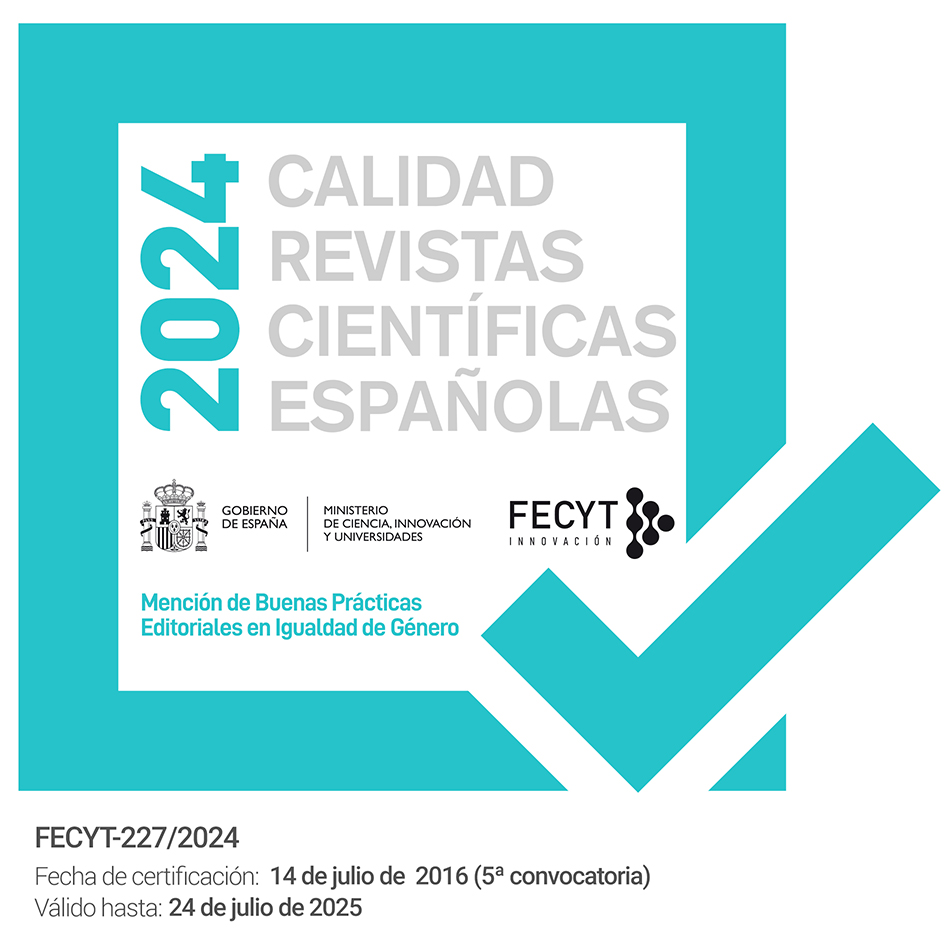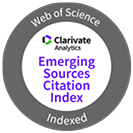Topical Ethosomal Formulation of Alpha Arbutin: Dermatokinetic Study and In-vitro Evaluation
DOI:
https://doi.org/10.30827/ars.v66i2.31421Keywords:
Alpha arbutin, Hyperpigmentation, Ethosomes, Skin permeation, DermatokineticsAbstract
Introduction: Melasma is a skin disorder characterized by increase in melanin production causes patient inconvenience. Alpha-arbutin blocks epidermal melanin biosynthesis by inhibiting enzymatic oxidation of Tyrosine. Alpha-arbutin is hydrophilic and poorly permeates through stratum corneaum. Ethosomes enhance permeability of drugs into deeper layers and extend the release. The main goal of this study was to prepare ethosomal gel containing alpha-arbutin to enhance permeation to skin.
Method: Ethosomes gel of alpha arbutin were prepared by cold method using soy lecithin, ethanol, and propylene glycol (PG) and evaluated for in vitro drug diffusion, vesicle size, entrapment efficiency and dermatokinetic study.
Results: The entrapment efficiency and drug diffusion of the prepared ethosomal gel containing alpha arbutin were found to be 94.99 % and 106.63 %, respectively. The vesicle size, polydispersity index, and zeta potential of the ethosomes formulated with 20 % w/w ethanol and 4 % w/w soy lecithin were recorded as 138.1 nm, 0.406, and -48 mV, respectively. The in vitro diffusion study illustrated burst release, with 97.56 ± 0.68 % drug released at 90 minutes. At the end of 8 hours, approximately 47.85% of the drug had diffused from the ethosomal gel. The dermatokinetic study demonstrated that the retention time of the drug in the dermis and epidermis was significantly higher in the ethosomal gel compared to the marketed cream.
Conclusions: Alpha arbutin was successfully formulated as an ethosomal suspension and converted into a gel. Due to the higher concentration of ethanol, drug permeation into the dermis and epidermis was significantly improved. Dermatokinetic studies demonstrated better retention of the drug in the dermis and epidermis layers compared to the marketed formulation.
Downloads
References
Radmard A, Saeedi M, Morteza-Semnani K, Hashemi S, Nokhodchi A. An eco-friendly and green formulation in lipid nanotechnology for delivery of a hydrophilic agent to the skin in the treatment and management of hyperpigmentation complaints: Arbutin niosome (Arbusome). Colloids and Surfaces B: Biointerfaces. 2021;201:111616. Doi: 10.1016/j.colsurfb.2021.111616. DOI: https://doi.org/10.1016/j.colsurfb.2021.111616
Rigopoulos D, Gregoriou S, Katsambas A. Hyperpigmentation and melasma. Journal of cosmetic dermatology. 2007;6(3):195-202. Doi: 10.1111/j.1473-2165.2007.00321.x. DOI: https://doi.org/10.1111/j.1473-2165.2007.00321.x
Migas P, Krauze-Baranowska M. The significance of arbutin and its derivatives in therapy and cosmetics. Phytochemistry Letters. 2015;13:35-40. Doi: 10.1016/j.phytol.2015.05.015. DOI: https://doi.org/10.1016/j.phytol.2015.05.015
Saeedi M, Eslamifar M, Khezri K. Kojic acid applications in cosmetic and pharmaceutical preparations. Biomedicine & Pharmacotherapy. 2019;110:582-93. Doi: 10.1016/j.biopha.2018.12.006. DOI: https://doi.org/10.1016/j.biopha.2018.12.006
Ephrem E, Elaissari H, Greige-Gerges H. Improvement of skin whitening agents efficiency through encapsulation: Current state of knowledge. International Journal of Pharmaceutics. 2017;526(1-2):50-68. Doi: 10.1016/j.ijpharm.2017.04.020. DOI: https://doi.org/10.1016/j.ijpharm.2017.04.020
Garcia-Jimenez A, Teruel-Puche J, Berna J, Rodriguez-Lopez JN, Tudela J, Garcia-Canovas F. Action of tyrosinase on alpha and beta-arbutin: A kinetic study. PloS one. 2017;12(5):e0177330. Doi: 10.1371/journal.pone.0177330. DOI: https://doi.org/10.1371/journal.pone.0177330
Smit N, Vicanova J, Pavel S. The hunt for natural skin whitening agents. International journal of molecular sciences. 2009;10(12):5326-49. Doi: 10.3390/ijms10125326. DOI: https://doi.org/10.3390/ijms10125326
Sugimoto K, Nishimura T, Nomura K, Sugimoto K, Kuriki T. Inhibitory effects of α-arbutin on melanin synthesis in cultured human melanoma cells and a three-dimensional human skin model. Biological and Pharmaceutical Bulletin. 2004;27(4):510-4. Doi: 10.1248/bpb.27.510. DOI: https://doi.org/10.1248/bpb.27.510
Chandorkar N, Tambe S, Amin P, Madankar C. Alpha Arbutin as a Skin Lightening Agent: A Review. International Journal of Pharmaceutical Research (09752366). 2021;13(2). doi: 10.31838/ijpr/2021.13.02.446. DOI: https://doi.org/10.31838/ijpr/2021.13.02.446
Wen A, Choi M, Kim D. Formulation of liposome for topical delivery of arbutin. Archives of pharmacal research. 2006;29:1187-92. Doi: 10.1007/BF02969312. DOI: https://doi.org/10.1007/BF02969312
Verma P, Pathak K. Therapeutic and cosmeceutical potential of ethosomes: An overview. Journal of advanced pharmaceutical technology & research. 2010;1(3):274-82. Doi: 10.4103/0110-5558.72415. DOI: https://doi.org/10.4103/0110-5558.72415
Akhtar N, Akhtar N. Development of stable tocopherol succinate‐loaded ethosomes to enhance transdermal permeation: In vitro and in vivo characterizations. Journal of Cosmetic Dermatology. 2022;21(10):4942-55. Doi: 10.1111/jocd.14907. DOI: https://doi.org/10.1111/jocd.14907
Rakesh R, Anoop K. Ethosomes for transdermal and topical drug delivery. Int J Pharm Pharm Sci. 2012;4(3):17-24. DOI: https://doi.org/10.4103/0975-7406.103274
Touitou E, Dayan N, Bergelson L, Godin B, Eliaz M. Ethosomes—novel vesicular carriers for enhanced delivery: characterization and skin penetration properties. Journal of controlled release. 2000;65(3):403-18. Doi: 10.1016/s0168-3659(99)00222-9. DOI: https://doi.org/10.1016/S0168-3659(99)00222-9
El-Shenawy A, Abdelhafez W, Ismail A, Kassem A. Formulation and characterization of nanosized ethosomal formulations of antigout model drug (febuxostat) prepared by cold method: In vitro/ex vivo and in vivo assessment. Aaps Pharmscitech. 2020;21:1-3. Doi: 10.1208/s12249-019-1556-z. DOI: https://doi.org/10.1208/s12249-019-1556-z
Satyam G, Shivani S, Garima G. Ethosomes: A novel tool for drug delivery through the skin. J Pharm Res. 2010;3(4):688-91.
Limsuwan T, Boonme P, Khongkow P, Amnuaikit T. Ethosomes of phenylethyl resorcinol as vesicular delivery system for skin lightening applications. Biomed research international. 2017;2017(1):8310979. Doi: 10.1155/2017/8310979. DOI: https://doi.org/10.1155/2017/8310979
Garg N, Sharma G, Singh B, Nirbhavane P, Tyagi K, Shukla R, Katare O. Quality by Design (QbD)-enabled development of aceclofenac loaded-nano structured lipid carriers (NLCs): An improved dermatokinetic profile for inflammatory disorder (s). International Journal of pharmaceutics. 2017;517(1-2):413-31. Doi: 10.1016/j.ijpharm.2016.12.010. DOI: https://doi.org/10.1016/j.ijpharm.2016.12.010
Raza K, Singh B, Singla S, Wadhwa S, Garg B, Chhibber S, Katare O. Nanocolloidal carriers of isotretinoin: antimicrobial activity against Propionibacterium acnes and dermatokinetic modeling. Molecular pharmaceutics. 2013;10(5):1958-63. Doi: 10.1021/mp300722f. DOI: https://doi.org/10.1021/mp300722f
Proksch E. pH in nature, humans and skin. J dermatology. 2018;45(9):1044-52. Doi: 10.1111/1346-8138.14489. DOI: https://doi.org/10.1111/1346-8138.14489
Published
How to Cite
Issue
Section
License
Copyright (c) 2024 Rajendra Mogal, Moreshwar Patil, Sanjay Kshirsagar, Vaishnavi Shingare, Mayur Patil, Aditya Gite

This work is licensed under a Creative Commons Attribution-NonCommercial-ShareAlike 4.0 International License.
The articles, which are published in this journal, are subject to the following terms in relation to the rights of patrimonial or exploitation:
- The authors will keep their copyright and guarantee to the journal the right of first publication of their work, which will be distributed with a Creative Commons BY-NC-SA 4.0 license that allows third parties to reuse the work whenever its author, quote the original source and do not make commercial use of it.
b. The authors may adopt other non-exclusive licensing agreements for the distribution of the published version of the work (e.g., deposit it in an institutional telematic file or publish it in a monographic volume) provided that the original source of its publication is indicated.
c. Authors are allowed and advised to disseminate their work through the Internet (e.g. in institutional repositories or on their website) before and during the submission process, which can produce interesting exchanges and increase citations of the published work. (See The effect of open access).























